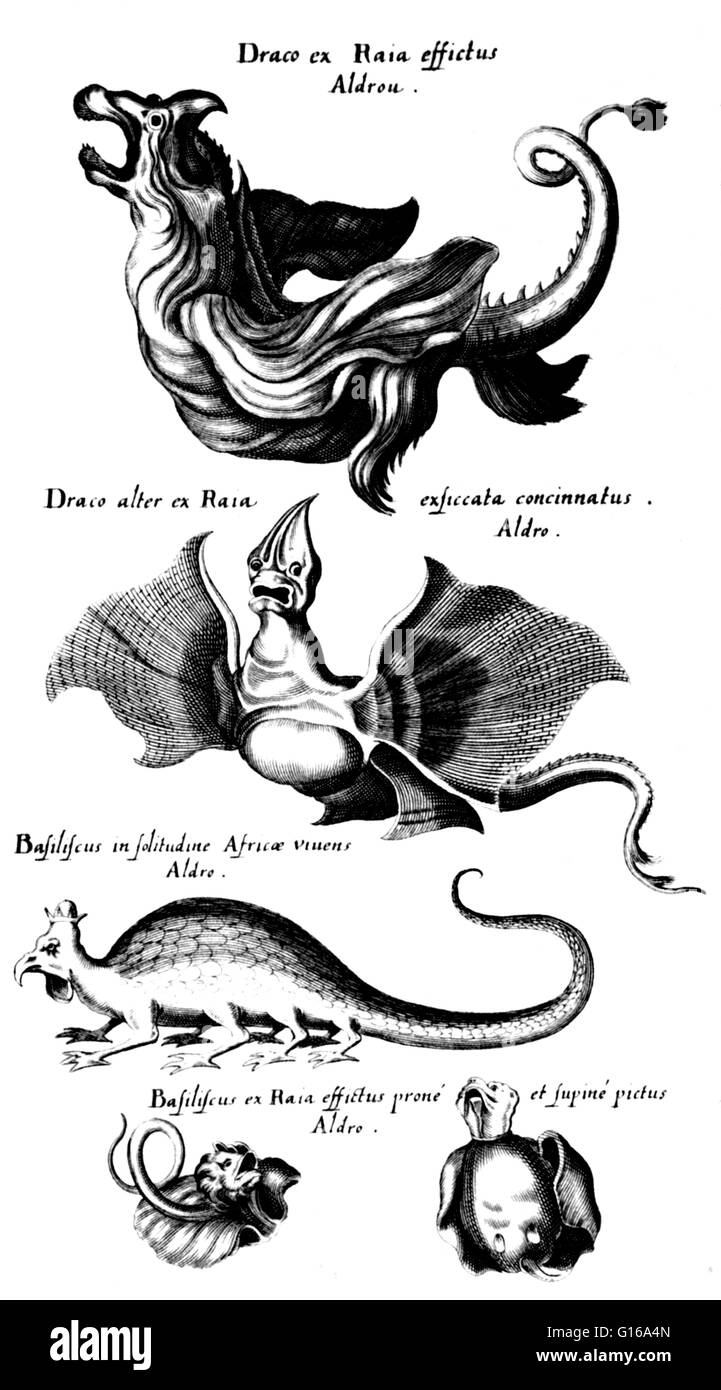Engraving by Matthaeus Merian appearing in Historia naturals de serpentines by John Jonston, 1657. 1) Draco ex Raia, 2) Draco alter ex Raia, 3) Basiliscus in solitudine, 4) Basiliscus ex Raia. A dragon is a legendary creature, typically with serpentine or

Image details
Contributor:
Science History Images / Alamy Stock PhotoImage ID:
G16A4NFile size:
46.4 MB (875.6 KB Compressed download)Releases:
Model - no | Property - noDo I need a release?Dimensions:
3000 x 5409 px | 25.4 x 45.8 cm | 10 x 18 inches | 300dpiPhotographer:
Photo ResearchersMore information:
This image could have imperfections as it’s either historical or reportage.
Engraving by Matthaeus Merian appearing in Historia naturals de serpentines by John Jonston, 1657. 1) Draco ex Raia, 2) Draco alter ex Raia, 3) Basiliscus in solitudine, 4) Basiliscus ex Raia. A dragon is a legendary creature, typically with serpentine or reptilian traits, that features in the myths of many cultures. There are two distinct cultural traditions of dragons: the European dragon, derived from European folk traditions and ultimately related to Greek and Middle Eastern mythologies, and the Chinese dragon, with counterparts in Japan, Korea and other East Asian countries. In European bestiaries and legends, a basilisk is a legendary reptile reputed to be king of serpents and said to have the power to cause death with a single glance.